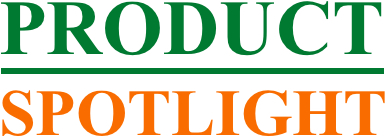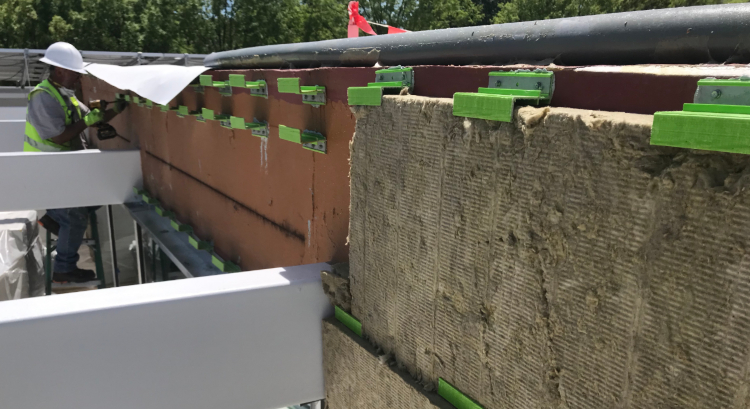James Dwight Dana described mineral wool long before it met the Industrial Revolution.
The pioneering geologist traveled to Hawaii’s Kilauea crater in the 1840s, where he observed wisps of lava that “lay like mown grass, its threads being parallel, and pointing away from the pool.”
 “On watching the operation a moment it was apparent that it proceeded from the jets of liquid lava thrown up by the process of boiling,” Dana wrote. “The currents of air, blowing across these jets, bore off small points, and drew out a glassy fibre, such as is produced in the common mode of working glass.”
“On watching the operation a moment it was apparent that it proceeded from the jets of liquid lava thrown up by the process of boiling,” Dana wrote. “The currents of air, blowing across these jets, bore off small points, and drew out a glassy fibre, such as is produced in the common mode of working glass.”
Known as “Pele’s hair” (after the Hawaiian goddess of volcanoes), the grass-like strands actually were used by natives on the Big Island to insulate their huts and protect them from fire.
Some manufactured mineral wool insulation (including the Thermafiber brand used on the Kendeda Building for Innovative Sustainable Design) still includes volcanic basalt as a source material. But most mineral wool is composed primarily of slag, a glass-like byproduct of smelting ore. The slag and rock is melted in a furnace at temperatures of up to 3000 degrees. Steam is jetted over the brew, pulling wisps of the material off the surface and into a spinning chamber. With the help of chemical binders, the intertwined fibers are then pressed into thick, chaotically “woven” mats.
In 1934, Thermafiber became one of the early makers of mineral-wool insulation. But for many years, the Indiana company’s product took a backseat to fiberglass — a similar but lower-performing material that dominated the insulation market in the second half of the 20th century. (Technically, fiberglass is a mineral wool because its source material is inorganic; most often, however, mineral wool refers to the product woven from rock and slag fibers).
In recent years, however, mineral wool has been making something of a comeback. According to most estimates, it makes up just over 1 percent of the global insulation market. That’s doubled over less than a decade and is projected to double again over the next few years.
In one sign that mineral wool is on the upswing, Owens Corning bought Thermafiber in 2013. That allowed the fiberglass insulation giant to enter the mineral wool market. Other mineral wool leaders include Knauf Insulation and Rockwool International.
While mineral wool is more expensive than fiberglass (the product it’s most often compared to), it has a lot of advantages. The most obvious is performance: Typically, an inch of mineral wool has around one-and-a-half times the R-value of fiberglass. It’s also easier to install — or at least to install without compromising effectiveness — because stiff mats of mineral wool don’t flop down as do rolls of fiberglass bats when they’re lain against a wall. Also, mineral wool is more resistant to fire, doubles as an exceptional sound barrier, contains a higher percentage of recycled materials (all that slag) and probably takes less energy to manufacturer.
One advantage of mineral wool puts it in an entirely different class from fiberglass. It’s hydrophobic. Fiberglass gets soggy, and water causes it to lose its insulating value; mineral wool retains its structure when wet, and water simply drips through it.
That means that mineral wool can be attached to the outside of a building’s shell. That’s how Thermafiber Rainbarrier 45 is being used on the Kendeda Building. On the exterior, insulation can be much more effective because it can be installed in a continuous wrap. Interior bats must be placed in wall cavities, where studs and other structural components create gaps in the insulation — thermal bridges that conduct heat in and out of the building.
At the same time, there’s a notable sustainability challenge to the exterior application of mineral wool. That’s particularly true in humid climates. For many decades, the binders that keep the wool together and give it a form contained phenol formaldehyde, which is known carcinogen on the Red List of chemicals banned from Living Building projects.
Over the last couple of years, manufacturers have been replacing the formaldehyde-laced binders with bio-based binders. Among Thermafiber’s formaldehyde-free products are two types listed as Red List free on their Declare labels.
So why would the Kendeda Building team choose to go with a Thermafiber product that still contains the formaldehyde-laced resin? It turns out that those bio-based binders can run into problems on when placed outside the building envelope in humid climates. So the Living Building Challenge has a long-standing exception allowing formaldehyde in mineral wall insulation “for exterior applications (such as rain screen assemblies or foundation insulation”).
The exception notes that the formaldehyde issue is less of an environmental and health concern than is one presented by the most common external insulation alternative:
While rigid mineral wool insulation does contain some formaldehyde, most of the formaldehyde is eliminated in the production process through a chemical reaction and high heat. Rigid mineral wool insulation installed on the exterior of the building poses less risk to humans and ecosystem than rigid foam insulation products, which almost always contain HFRs and use blowing agents with high global warming potential.
At the same time, future Living Building projects may be pressed to find a way to apply formaldehyde-free mineral wool — even on building exteriors.
“ILFI will be reevaluating the status of this exception as we discuss and draft the Petal Handbooks for the Living Building Challenge 4.0,” ILFI spokeswoman Nicole Van Batenburg said.
Product basics: Thermafiber Rainbarrier 45
Manufacturer: Now a subsidiary of Owens Corning, Thermafiber has been producing mineral wool insulation at its Wasbash, Indiana, plant since 1934. In 2016, the company opened a new plant in Joplin, Missouri.
Kendeda Building subcontractor: Ochoa Construction is the insulation installer.
Products used on Kendeda Building: Thermafiber Rainbarrier 45, three-inch thickness. Other forms of insulation are part of the building envelope but Rainbarrier 45 is the only mineral wool product.
Performance: Rainbarrier 45 has an exceptional R-value of 4.3 per inch.
Material transparency and toxicity: Rainbarrier 45 is a Declare Label product that contains a resin with a noncompliant chemical.
Corporate sustainability and responsibility: Parent company Owens Corning — which manufacturers insulation, roofing and composite materials — ranks higher than 91 percent of all global companies on a variety of sustainability and responsibility metrics, according to CSRHub. On Corporate Responsibility Magazine’s “100 Best Corporate Citizens 2019” list, Owens Corning comes out even better — it ranks number one among the 1000 largest publicly traded U.S. companies.
PHOTO AT TOP: An Ochoa Construction employee installs brackets for mineral wool insulation on the exterior of the Kendeda Building. Photo by Ken Edelstein.


